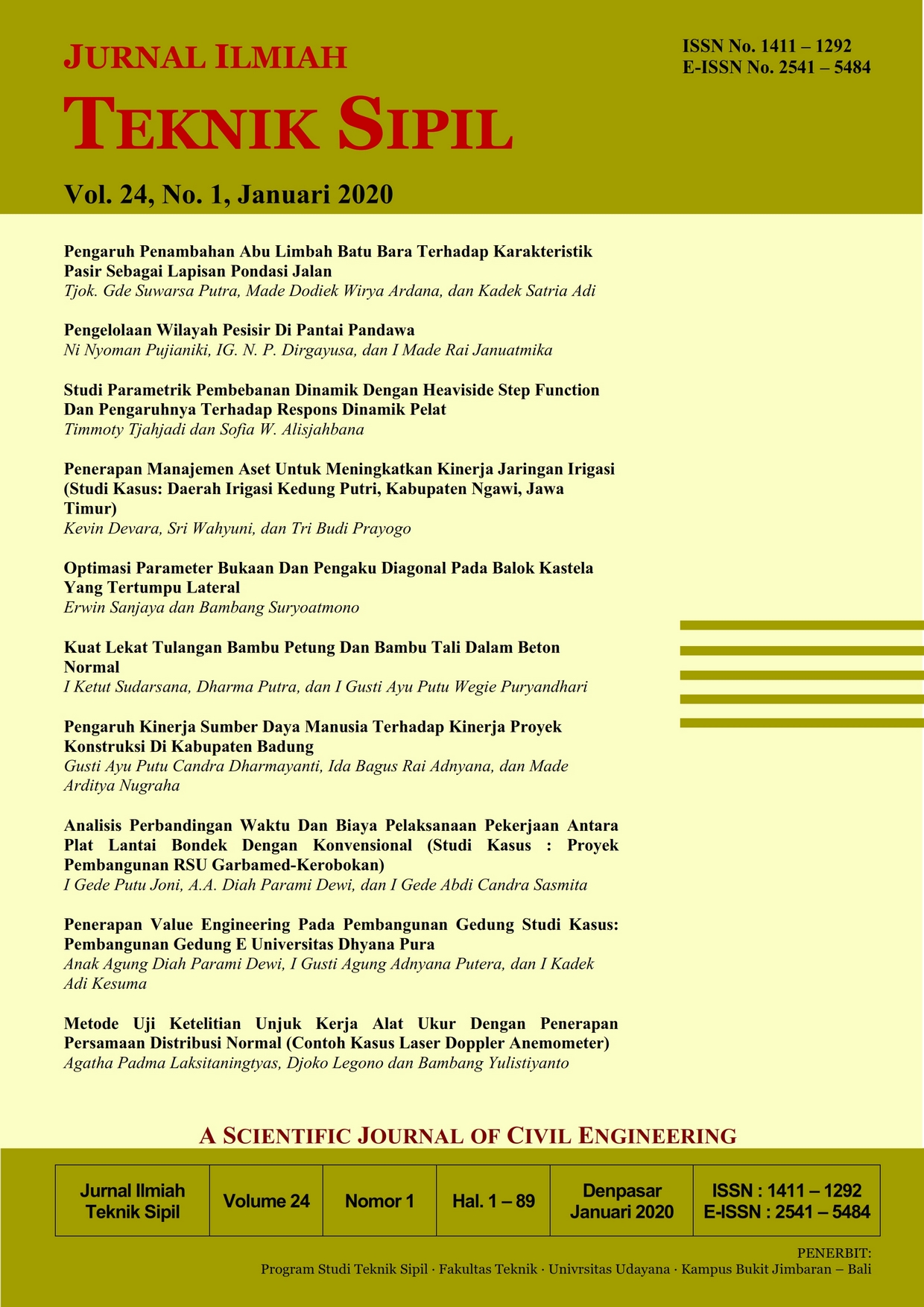Optimization Parameter of Openings with Diagonal Stiffeners on Laterally Brace Castellated Steel Beams
Abstract
Shear force in general greatly contributes to cause failure of castellated beams so diagonal stiffeners on the openings are required. Optimization was done by vary dimension of openings and diagonal stiffeners. Finite element method is utilized to perform nonlinear analysis. The objective of this research is to compare the numerical results of castellated beams without diagonal stiffeners with AISC design procedures that provided in Steel Design Guide 31, AISC 2016. Furthermore, nonlinear behaviour that involves critical load and Von Mises stress distribution of castellated beams with and without diagonal stiffeners were studied to obtain optimum dimension of openings and diagonal stiffeners. Optimum value in this research involves the greatest initial stiffness (Ki), strength (wmax), and ductility (?) of structure. The results showed that AISC design procedures could predict the location of maximum stress accurately and yield more conservative ultimate strength of beam compared to numerical result. The optimum models on castellated steel beams without diagonal stiffeners are CB60-1 (wnstmax = 56,16 kN/m) and CB45-1 (?nst = 3,06) with average initial stiffener 5,78 kN/m. While, the optimum models on castellated steel beams with diagonal stiffeners are CB45-33 (Ksti = 6,99 kN/m/m), CB60-11 (wstmax = 67,53 kN/m), and CB60-24 (?st = 2,79). Thus, utilization of diagonal stiffeners is effective to increase initial stiffness and strength of structure, but reduce the structure’s ductility.
Downloads
References
[2] D., Kerdal dan A., Nethercot D. 1984. Failure Modes For Castellated Beams. J Constr Steel Res 1984, 4, p. 295-315.
[3] Soltani, M.R., Bouchair, A., dan Mimoune, M. 2012. Nonlinear FE Analysis of The Ultimate Behaviour of Steel Castellated Beams. Journal of Constructional Steel Research, 70, p. 101-114.
[4]Anupriya, B. dan Jagadeesan, K. 2014. Shear Strength of Castellated Beam With and Without Stiffener Using FEA (ANSYS 14). International Journal of Engineering and Technology, 6(4), p. 1970-1981.
[5] Sandy, D., Limbong, H.R., Runtulalo, D., dan Rante, H. 2014. Experimental Study on Castellated Beams with Hexagonal Variation Using Monotonic Loading. International Journal of Engineering and Science Applications, 1, p. 67-75.
[6] Budi, Listiyono, Sukamta, dan Partono, Windu. 2017. Optimization Analysis of Size and Distance of Hexagonal Hole in Castellated Steel Beams. Sustainable Civil Engineering Structures and Construction Materials (SCESCM) 2016, 171, p. 1092-1099.
[7] Frans, R., Parung, H., Sandy, D., dan Tonapa, S. 2017. Numerical Modelling of Hexagonal Castellated Beam Under Monotonic Loading. Sustainable Civil Engineering Structures and Construction Materials (SCESCM) 2016, 171, p. 781-788.
[8] Girija, K., Narayanan, K. Sriman, dan Anupriya, B. 2018. Strength Study of Stiffeners on Castellated Beam for Circular and Hexagonal Opening Using ANSYS. National Journal of Multidisciplinary Research and Development, 3(2), p. 01-06.
[9] Nair, Gopika S. dan Pillai, P.R. Sreemahadevan. 2018. Castellated Beam with Diagonal Stiffeners Along Hexagonal Cuts. International Research Journal of Engineering and Technology, 5(6), p. 2879-2883.





